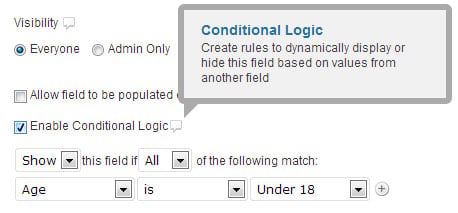上周,Twitter 发布了 @Anywhere,只需在代码中添加几行,就可以将 Twitter 的所有平台功能引入您的网站。 @Anywhere 可以允许任何事情,从将简单的@用户名转换为可点击的链接,甚至直接从您的个人网站创建新推文。我将在本教程中向您展示具体如何操作!
开始之前,创建一个应用程序
为了开始使用 @Anywhere,您必须拥有 API 密钥。什么?你没有吗?没问题。只需转到此处注册新的应用程序(不要从此处注册)。
- 如果您安装了本地服务器,请将其设置为域(例如,developertutorial.com),因为它无法与您的本地主机一起使用(如果您不知道如何操作,请查看本教程,主机文件部分尤为重要)。
- 如果您没有本地服务器,请将此部分留空。请记住,对于生产环境,您必须将其设置为您正在使用的域。
最后,将默认访问类型设置为“读取和写入”。这非常重要!
现在,您将被重定向到应用程序设置页面。复制消费者密钥(API 密钥),让我们开始使用@Anywhere。
包括 @Anywhere 的 Javascript
打开新的 HTML 文件,并在 标记内包含:
<script src=\”http://platform.twitter.com/anywhere.js?id=<strong>APIKey</strong>&v=1\” type=\”text/javascript\”></script>
您的代码应如下所示:
<!DOCTYPE HTML>
<html>
<head>
<title>@Anywhere</title>
<meta http-equiv=\”Content-Type\” content=\”text/html; charset=UTF-8\” />
<link href=\”styles.css\” rel=\”stylesheet\” type=\”text/css\” />
<script src=\”http://platform.twitter.com/anywhere.js?id=APIKey&v=1\” type=\”text/javascript\”></script>
</head>
<body>
…
</body>
</html>
将 APIKey 替换为您在上一步中获得的应用程序的 API 密钥。参数 v=1 是版本。也许将来,Twitter 会添加新功能,也许还有新语法。为了防止破坏现有的 @Anywhere 代码,他们将保留旧代码(如果指定)。版本 1 支持所有主要浏览器,包括 IE6。
包含此 JavaScript 文件后,我们可以访问 twttr 对象,当 @Anywhere 准备就绪时,该对象将使用参数调用 anywhere() 函数:
twttr.anywhere(function(twitter) {
// Actions when @Anywhere is ready
});
参数(在本例中为 twitter)是我们将使用的对象,类似于 jQuery 的 $。
接下来,我们需要创建一个 HTML 库。复制并粘贴以下代码,并将其放置在“body”标记内。
<div id=\”main\”>
<div class=\”post\”>
<h2>My blog post</h2>
<div class=\”content\”>
<p>This is a test blog post testing @Anywhere by @twitter.</p>
<p>If you enjoyed this tutorial, please <a href=\”http://twitter.com/faelazo\” class=\”hovercard\”>follow me</a> and keep in touch with @NETTUTS for more awesomeness.</p>
</div>
</div>
<div class=\”comments\”>
<h3>Comments</h3>
<ol>
<li><span class=\”author\”>@corcholat</span> says:
<p>Such a great tutorial! </p>
</li>
<li><span class=\”author\”>@faelazo</span> says:
<p>You should also follow @smashingmag</p>
</li>
</ol>
</div>
</div>
现在让我们深入探讨。
1. linkifyUsers:将@something转换为链接
@Anywhere 允许我们将 @mentions 转换为链接。此功能称为 linkifyUsers,非常简单:它设置您希望转换为链接的 HTML 元素。
由于我们希望将文档中的所有@mentions转换为链接,因此我们只需在body元素中调用linkifyUsers()函数即可:
twttr.anywhere(function(twitter) {
twitter(\”body\”).linkifyUsers();
});
正如前面提到的,回调函数内部的“twitter”参数很像 jQuery 的“$”别名;如果我们想要将 @mentions 转换为链接,但仅限于特定部分内的链接,我们可以使用 CSS 选择器,如下所示。
twttr.anywhere(function(twitter) {
twitter(\”.post\”).linkifyUsers();
});
linkifyUsers() 接受一个对象作为参数,有两个属性:className 和 success。通过 className ,您可以指定找到 @mentions 时要应用的类;因此,例如,您可以添加一个无语义的“红色”类并在 CSS 中指定:
.red { color:#f00; }
这是代码。
twttr.anywhere(function(twitter) {
twitter(\”body\”).linkifyUsers({
className:\’red\’
});
});
2.hovercards:在悬停时显示附加信息
mousecards() 将 @mentions 转换为链接,但也会在鼠标悬停时加载一个小的弹出工具提示。这是其用法的基本示例。
twttr.anywhere(function(twitter) {
twitter.hovercards();
});
但是, hovercards() 足够灵活,可以包含某些元素,即使它们中没有@mention。在 HTML 中,我将“follow me”链接到 http://twitter.com/faelazo;但 @anywhere 足够聪明,可以将此链接转换为悬停卡。通过向锚标记添加“hovercard”类,Twitter 将处理其余的事情!
twttr.anywhere(function(twitter) {
// Find the @mentions and linkify as usual
twitter(\”body\”).hovercards();
// Let\’s find the elements which has a hovercard class
twitter(\”.hovercard\”).hovercards({
username: function(node){
var twitter_regexp = /twitter\\.com\\/([a-z0-9_]*)\\/?(.*)?/gi;
if(node.href.match(twitter_regexp) && (twitter_match = twitter_regexp.exec(node.href))){
return twitter_match[1];
}
return \’\’;
}
});
});
username 参数采用一个函数,该函数的参数将是找到的对象(在本例中为 node)。以下是函数内部逐行发生的事情。
var twitter_regexp = /twitter\\.com\\/([a-z0-9_]*)/gi;
这是一个正则表达式。它将匹配带有字母数字值和下划线的 twitter.com/ 字符串。
if(node.href.match(twitter_regexp) && (twitter_match = twitter_regexp.exec(node.href))){
如果正则表达式与节点元素中的 href 属性匹配,则设置变量 twitter_match 以捕获数组中的值。
return twitter_match[1];
它将返回找到的匹配项。
我们添加一个“return”,以防元素确实有一个类,但不引用 twitter.com;所以不会有匹配。如果它返回 false 或 NULL,则脚本会引发错误。使用空字符串时,它会显示一个悬停卡,但未找到用户。
现在,如果这有点太复杂,您可以随时简化过程,并将用户名添加为锚标记的标题属性。
<a href=\”http://twitter.com/faelazo\” class=\”hovercard\” title=\”faelazo\”>follow me</a>
只需返回 node 的 title 属性即可。容易多了,对吧?
twitter(\”.hovercard\”).hovercards({
username: function(node){
return node.title;
}
});
“hovercards”可以应用于任何元素(甚至是 div),只要它指定用户名即可。
twitter(\”#main\”).hovercards({ username: function(){ return \’therrorcom\’; }});
3. followButton:一键邀请关注
followButton() 将在先前指定的元素中的用户名参数后面附加一个按钮。
以下代码将在 #main div 中附加一个按钮以关注 Nettuts+。
twttr.anywhere(function(twitter) {
twitter(\”#main\”).followButton(\”nettuts\”);
});
followButton() 需要一个参数:要跟随的用户名。够简单吧?
4. tweetBox:来自您网站的推文
tweetBox() 将附加一个框,用户可以在其中输入评论并通过您的网站发布推文。
tweetBox 可以接收一个对象作为参数,具有以下属性:
>
-
counter(布尔值,默认true)
是否显示剩余字符的计数器。
-
height(整数,默认65)
框的高度,以像素为单位。
-
width(整数,默认515)
框的宽度,以像素为单位。
-
label(字符串,默认“发生了什么?”)
框上方的文本。
-
defaultContent(字符串,默认无)
您可以默认输入 URL、@mention、#hashtag 等。
-
onTweet(函数)
按下推文按钮后调用。它接收两个参数:纯文本推文和 HTML 推文。
可以在带有注释类的元素之后调用默认的 tweetBox ,并使用以下代码片段。
twttr.anywhere(function(twitter) {
twitter(\”.comments\”).tweetBox();
});
因此,如果您想要自定义标签、内容以及发送推文时的回调,请使用此代码。
twitter(\”.comments\”).tweetBox({
label: \’What do you think about this article?\’,
defaultContent: \’#nettuts \’,
onTweet: function(plain, html){
// Actions when tweet is sent
}
});
如果您计划用您正在使用的 CMS 替换默认评论区域,则 onTweet 可能会很有用。您仍然需要一个数据库和一个表格来显示评论,对吧?因此,您可以对 CMS 进行一些修改,并使用 onTweet 事件发出 AJAX 请求,以将推文插入数据库。
5. connect:将用户登录到您的应用程序
正如您可能看到的,最后两种方法需要确认才能向应用程序授予权限。 @Anywhere 有一个方法来检查用户是否使用应用程序登录(而不是在 Twitter 上)。您可以使用条件来决定是否显示某些元素。
此代码片段将在元素中附加带有注释类的连接按钮。
twttr.anywhere(function(twitter) {
twitter(\”.comments\”).connectButton();
});
如果您需要不同大小的按钮,则可以传递具有属性大小和值小、中、大或 xlarge 的对象文字。请注意,“中”是默认值。
twttr.anywhere(function(twitter) {
twitter(\”.comments\”).connectButton({ size: \’large\’ });
});
Twitter 对象包含一些额外的好处;一个是currentUser,它是一个对象;另一个是 isConnected(),这是一个返回布尔值的函数。从这里,我们可以创建一些条件语句。
twttr.anywhere(function(twitter) {
if(twitter.isConnected()){
alert(\’Welcome, you are connected\’);
} else {
twitter(\”.comments\”).connectButton();
}
});
如果 isConnected() 返回 true,我们可以显示一些用户信息,例如用户名 (screen_name)、个人资料图片 (profile_image_url)、关注者或关注者。以下是应用程序可以访问的信息的列表。让我们看看最后综述中的 currentUser 对象。
6.最终综述:将它们混合在一起
我将使用 comments 类修改 div。
<div class=\”comments\”>
<h3>Comments</h3>
<ol>
<li><span class=\”author\”>@corcholat</span> says:
<p>Such a great tutorial! </p>
</li>
<li><span class=\”author\”>@faelazo</span> says:
<p>You should also follow @smashingmag</p>
</li>
</ol>
<div class=\”add\”>
<h3>Add comment</h3>
<div class=\”author\”></div>
<div class=\”box\”></div>
</div>
</div>
现在让我们加入 jQuery 以使事情变得更容易一些。在 和 之间插入以下代码:
<script src=\”http://ajax.googleapis.com/ajax/libs/jquery/1.4.2/jquery.min.js\” type=\”text/javascript\”></script>
现在我们有一个可以添加评论的空间。首先,如果用户未登录我们的应用程序,我们将使用 isConnected() 条件来显示一个按钮;该按钮将被附加到带有 \”add\” 类的元素。
if(twitter.isConnected()){
twitter(\”.comments\”).connectButton();
}
现在让我们使用 Twitter 的 currentUser 对象。该对象可以使用 data() 方法检索信息。因此以下代码片段将检索用户的 screen_name。
twitter.currentUser.data(\’screen_name\’);
@Anywhere 让我们为 connectButton 功能指定回调函数。作为参数,它接受具有两个属性的对象: authComplete 和 signOut;两者都是函数,因此当调用 signOut 时,我们可以刷新页面。 authComplete 也是如此。让我们用以下代码片段替换 connectButton() 行:
twitter(\”.comments > .add\”).connectButton({
authComplete: function(user) {
location.reload();
},
signOut: function() {
location.reload();
}
});
这非常简单:我们传递一个对象作为参数,然后设置 signOut 和 authComplete 函数来重新加载页面。请注意,为了设置 signOut 事件,我删除了 isConnected() 条件的 else 子句。
接下来,让我们在条件中添加一个 tweetBox 。
if(twitter.isConnected()){
$(\”.comments > .add > .author\”).html(\'<img src=\”\’+ twitter.currentUser.data(\’profile_image_url\’) +\’\” /> <a href=\”http://twitter.com/\’+ twitter.currentUser.data(\’screen_name\’) +\’\”>\’+ twitter.currentUser.data(\’screen_name\’) +\'</a> | <a href=\”javascript:twttr.anywhere.signOut();\”>Sign out</a>\’);
twitter(\”.comments > .add\”).tweetBox({
label: \’What do you think about this article?\’,
defaultContent: \’#nettuts \’
});
}
如果用户已登录,则应该有一个关注按钮。同样,在条件语句中:
twitter(\”.comments > .add\”).followButton(\”nettuts\”);
这是完整的条件,汇总了所有 @Anywhere 功能。
if(twitter.isConnected()){
$(\”.comments > .add > .author\”).html(\'<img src=\”\’+ twitter.currentUser.data(\’profile_image_url\’) +\’\” /> <a href=\”http://twitter.com/\’+ twitter.currentUser.data(\’screen_name\’) +\’\”>\’+ twitter.currentUser.data(\’screen_name\’) +\'</a> | <a href=\”javascript:twttr.anywhere.signOut();\”>Sign out</a>\’);
twitter(\”.comments > .add\”).tweetBox({
label: \’What do you think about this article?\’,
defaultContent: \’#nettuts \’
});
twitter(\”.comments > .add\”).followButton(\”nettuts\”);
}
结论
@Anywhere 显然是 Twitter 对 Facebook Connect 的回应。他们希望将这个平台带到尽可能多的网络网站上;虽然该服务还很年轻,而且文档肯定还有待改进,但它绝对是有前途的!请向我们展示您在自己的网站中使用@Anywhere 做了什么!
以上就是使用 Twitter 的 @Anywhere 服务的 6 个简单步骤的详细内容,更多请关注悠久资源其它相关文章!




















